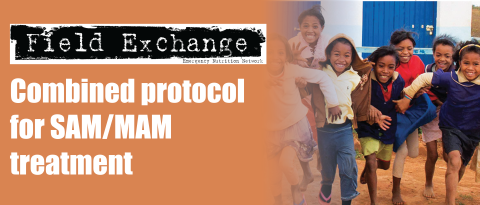Nutrition funding: The missing piece of the puzzle
News
Summary of report*
A recent report by Generation Nutrition, a coalition of 85 civil society organisations, describes both why funding matters to nutrition and the current situation with regard to donor funding and domestic resources. The report calculates that, at the current rate of progress, countries will miss the 2025 World Health Assembly (WHA) targets on stunting and acute malnutrition by a significant margin (see Table 1), let alone the more ambitious Sustainable Development Goals (SDGs). Increasing funding is essential if these and the other global nutrition targets are to be met on time. Progress in meeting the WHA stunting and wasting targets are respectively 20 and five years behind schedule.
Table 1: Poor performance on the WHA global targets on stunting and acute malnutrition
In 2013, the UK hosted the Nutrition for Growth (N4G) event, a high-level summit resulting in over US$23 billion pledged to improve nutrition up to 2020. This was a substantial commitment, but ultimately not enough to end malnutrition in all its forms, as promised by world leaders. The report by Generation Nutrition describes the ‘London Legacy’ as presenting challenges in relation to the implementation of the deal; for example, of the eight donors who supplied data on nutrition-specific and nutrition-sensitive aid spending in 2013, only 64% of the aid pledged for that year was actually disbursed. Moreover, the 2015 Global Nutrition Report, which tracks N4G commitments, revealed that 13 donors were spending either less than US$1 million per annum or nothing at all on nutrition-specific programmes. Furthermore, only a relatively small share of donor budgets in supposedly nutrition-sensitive sectors is being targeted directly at improving nutrition – 3% out of 21% spend on health agriculture, WASH (water, sanitation and hygiene) and education.
The 2016 N4G summit in Rio de Janeiro did not turn out to be a pledging summit, as had originally been envisaged. The Generation Nutrition campaign is calling for the next high-level nutrition funding summit to be announced immediately and for all stakeholders to step up and pledge ambitious and SMART (Specific, Measurable, Achievable, Relevant and Time-bound) financial commitments. At this next summit, they want donors to agree to a doubling of global aid to nutrition by 2020, and for southern governments to agree to increase their budget allocated to nutrition, starting with (but not restricted to) the health sector.
Recommendations
Recommendations made in the report are in line with priorities from states and other donors who are part of the N4G initiative. They relate to measures which, if implemented, would help either to increase nutrition funding or to improve the impact of existing programmes.
All international donors
- To identify quickly a date and occasion for a new, high-level, pledging summit on nutrition, working together with southern countries.
- To ensure that the promises made at N4G 1 are fulfilled by keeping spending up to 2020 ‘on track’.
- To go further and commit to a doubling of global aid for nutrition, to be achieved by 2020 and based on a verifiable baseline figure (for instance, 2014 spending). A significant share of the increase should be for life-saving, nutrition-specific interventions.
- To improve the nutritional impacts of aid channelled to agriculture, education, health, water and sanitation, and social protection. This can be done by ensuring that programmes include objectives on, and intended outcomes for, nutrition and that aid is targeted towards those most at risk of undernutrition.
For southern countries
- To support the inclusion of dedicated budget lines for nutrition within national health budgets.
- To raise the level of government expenditure in key nutrition-sensitive sectors, such as health, education, agriculture, water and sanitation, and social protection, and continue developing systems that can guarantee a minimum level of investment in nutrition (3% of national budgets).
For all stakeholders
- To announce measures to strengthen international, innovative, financing mechanisms and funds for nutrition. One example is UNITLIFE, an initiative for combating undernutrition, based on small-scale levies in the extractives sector (www.unitlife.org). The initiative is expected to generate US$115 million a year in its initial phase. Mali was the first country to contribute, with a levy of 10% per gram of gold sold. Another example is the Power of Nutrition (www.powerofnutrition.org); allocations totalling US$200 million have been made.
- To ensure that any new financial pledges are developed in a way that is SMART and makes their delivery easy to assess. For instance, all the money committed should represent additional spending.
*Nutrition Funding: the missing piece of the puzzle. A Generation Nutrition briefing paper. June 2016. www.generation-nutrition.org/sites/default/files/editorial/missing_piece_of_the_puzzle.pdf


